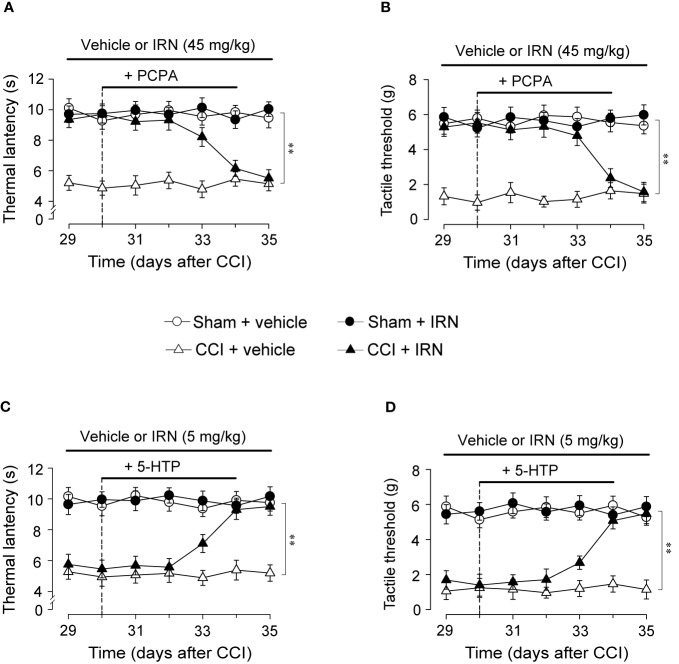Figure 5.
Effects of co-administration of PCPA and 5-HTP on the antinociceptive effects of isorhynchophylline (IRN) on thermal (heat) hyperalgesia and tactile allodynia. (A) Depletion of serotonin by PCPA (300 mg/kg for 5 days, i.p.) abrogated the antinociceptive action of isorhynchophylline on thermal (heat) hyperalgesia in CCI mice, without influencing the thermal (heat) sensitivity in sham-operated and vehicle-treated CCI mice. (B) Depletion of serotonin by PCPA (300 mg/kg for 5 days, i.p.) abrogated the antinociceptive action of isorhynchophylline on tactile allodynia in CCI mice, without influencing the tactile sensitivity in sham-operated and vehicle-treated CCI mice. (C) Administration of 5-HTP (10 mg/kg, i.p.) or isorhynchophylline at ineffective dose (5 mg/kg, p.o.) alone did not exhibit any antihyperalgesic effect in the Hargreveas test regardless of sham or CCI mice, but co-administration of them produced marked antinociceptive effect on thermal (heat) hyperalgesia in CCI (not sham-operated) mice. (D) Administration of 5-HTP (10 mg/kg, i.p.) or isorhynchophylline at ineffective dose (5 mg/kg, p.o.) alone did not exhibit any antiallodynic effect in the von Frey test regardless of sham or CCI mice, but co-administration of them engendered remarkable antinociceptive effect on tactile allodynia in CCI (not sham-operated) mice. Data are expressed as mean ± SEM (n = 9–11 per group), assessed by multifactor ANOVA followed by Duncan test. **p < 0.01, significantly different from the vehicle group.

